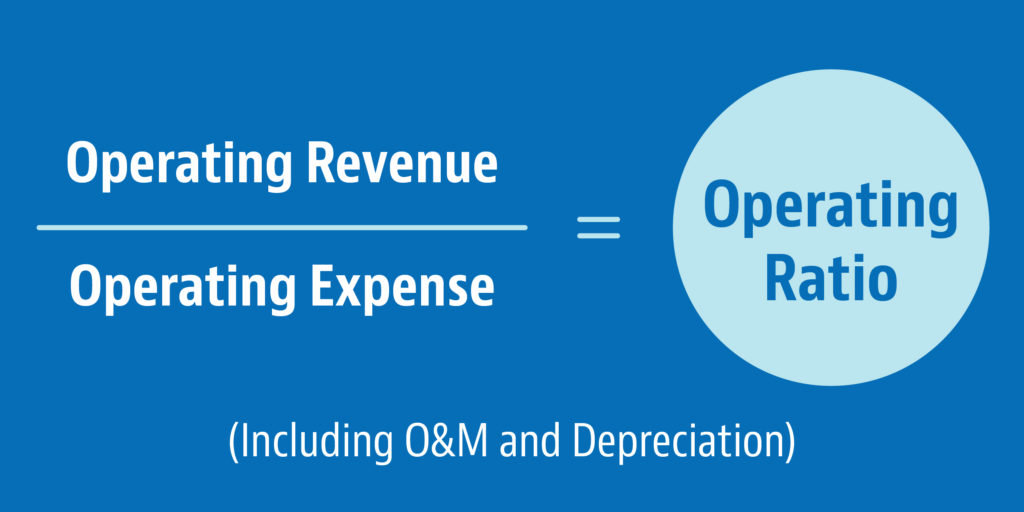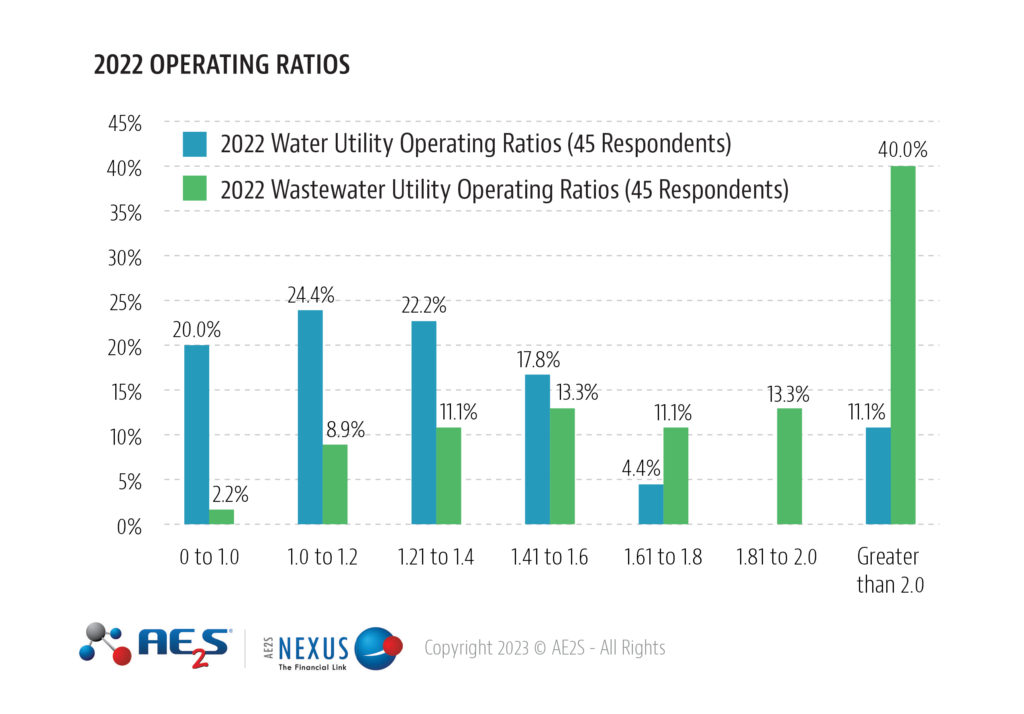A utility’s cost of service is defined as a system’s total cost of providing service to its customers. This generally includes operating expenses, maintenance expenses, debt service principal and interest payments, and adequate funding of systems. Appropriate funding of system renewal is often described as an annual investment in rate-funded capital, debt service principal, and contributions to reserves equal to at least annual depreciation of the system. The simplest measure of full cost is the sum of budgeted operation and maintenance (O&M) expenditures and annual depreciation.
Operating Ratios
Full-cost pricing is the direct application of the calculated cost of service to the development of rates, fees, charges, and other revenue mechanisms associated with providing service. The goal of full-cost pricing is a revenue stream sufficient to cover ongoing O&M requirements and reinvestment in the system.

Calculation of a utility’s operating ratio is one measure of full cost pricing. The operating ratio is calculated by dividing the operating revenues by operating expense and capital investment/reinvestment (i.e. budgeted depreciation). An Operating Ratio of 1.0 or greater indicates the utility is generating sufficient revenues to cover the O&M expenses and some portion of capital investment/reinvestment. An Operating Ratio less than 1.0 could indicate the utility relies on reserves or outside financial resources to meet total revenue requirements.
2023 Rate Survey Data
Data reported by water and wastewater utilities that participated in the 2023 AE2S Rate Survey included O&M and depreciation expenses, as well as operating revenue. Figure 1 illustrates the distribution of water and wastewater operating ratios for systems that reported those values. The calculated 2022 ratios ranged from 0.44 to 8.93, with average and median values of 1.58 and 1.26, respectively. Approximately 65% of water respondents were in the range of 1.0 to 1.6 and only 11% with a ratio larger than 2.0. About 40% of wastewater respondents reported data the yielded an operating ratio greater than 2.0.
Based on 2022 financial data, 20% of water respondents and 2.2% of wastewater respondents reported data that yielded an operating ratio of less than 1.0 for 2022. It is likely that these utilities still generated enough revenue to cover operating expenses but did not fully cover depreciation. This could mean that the utilities rely on non-rate revenue sources; however, best practices in rate-setting generally call for a rate structure capable of generating revenue that meets or exceeds budgeted expenditures and depreciation. By recovering all utility costs through designated fee schedules, users will better understand the value of the service provided.

Steps Toward Full Cost Pricing
The water/wastewater industry has taken great strides in promoting the concept of self-supporting utilities through full cost recovery, with this trend expected to continue. Utilities usually strive to meet full cost recovery over a period of several years. Monitoring operating ratios is one of the tools available to continually assess efforts to promote and maintain financial sustainability for your utility.

